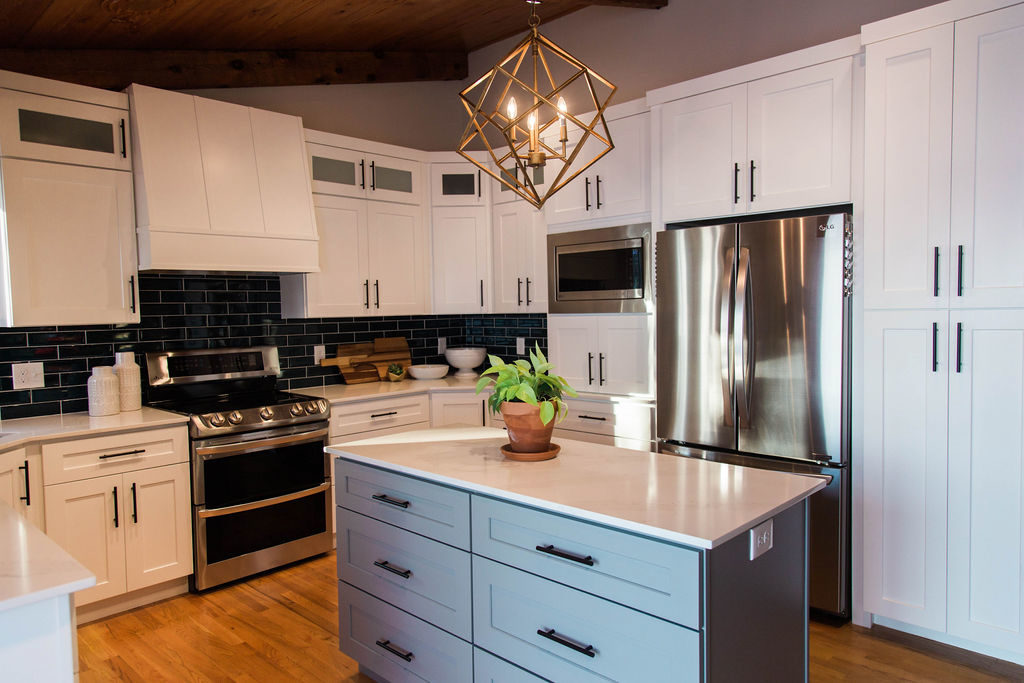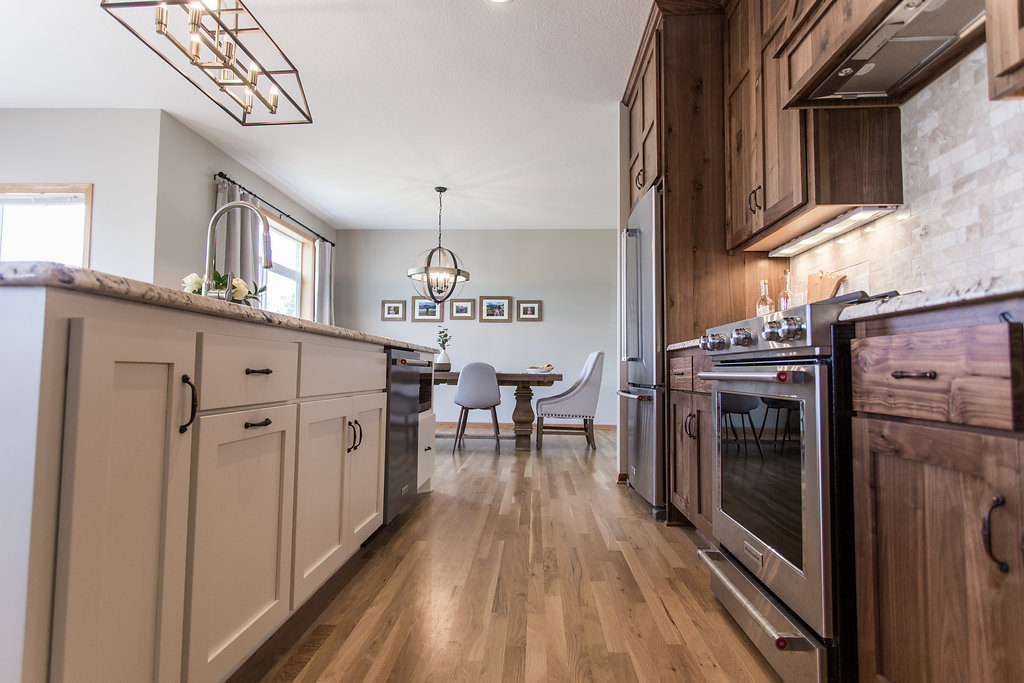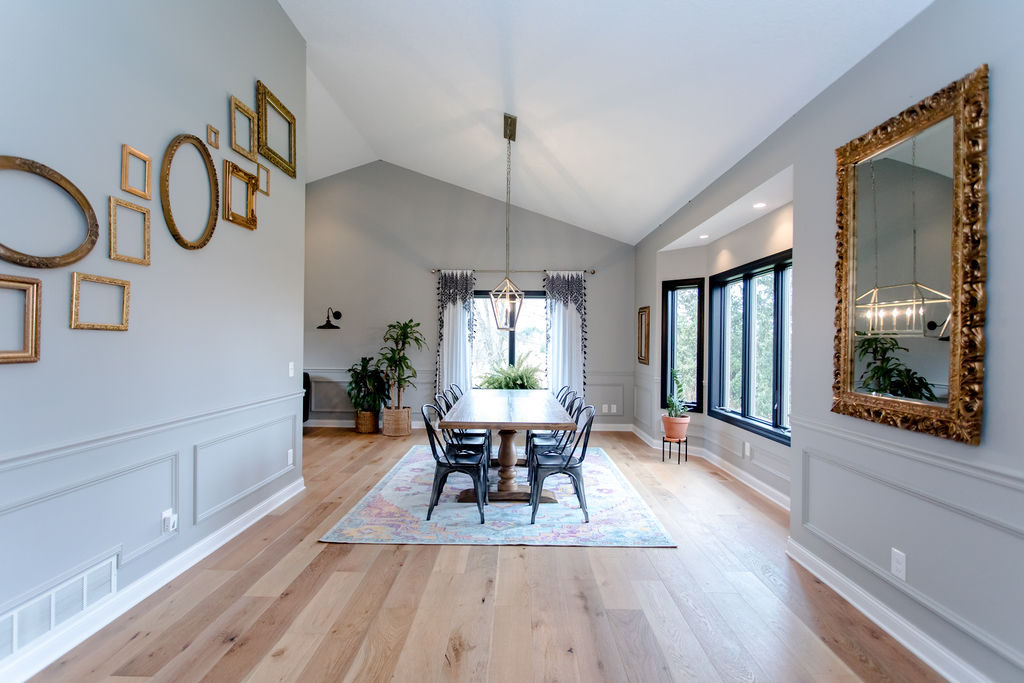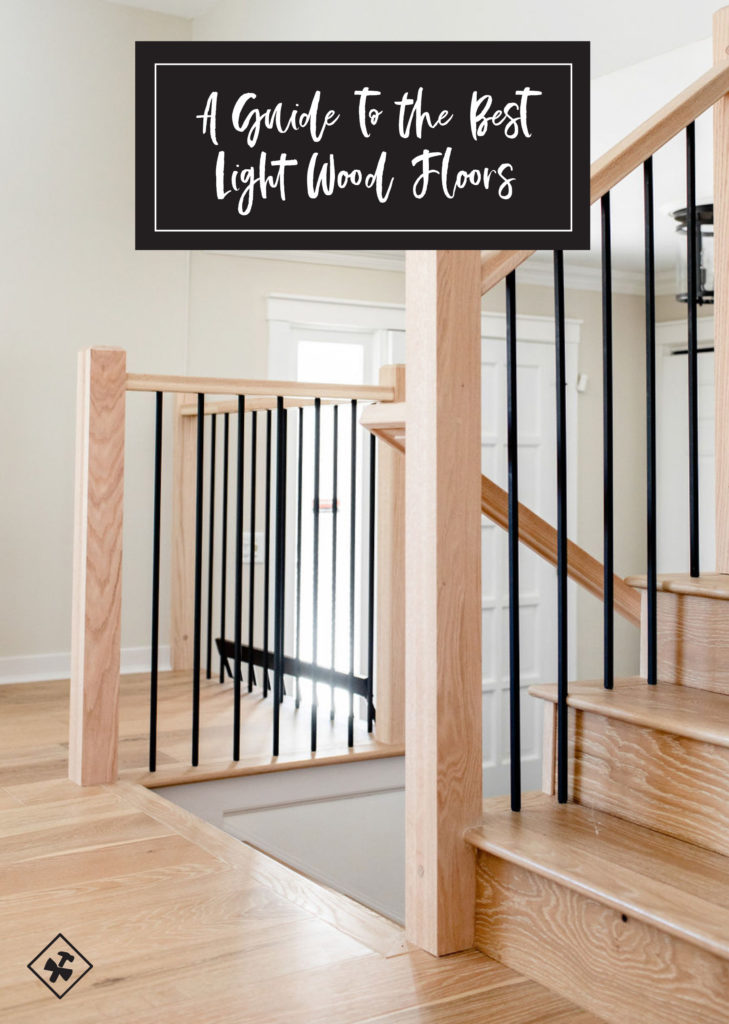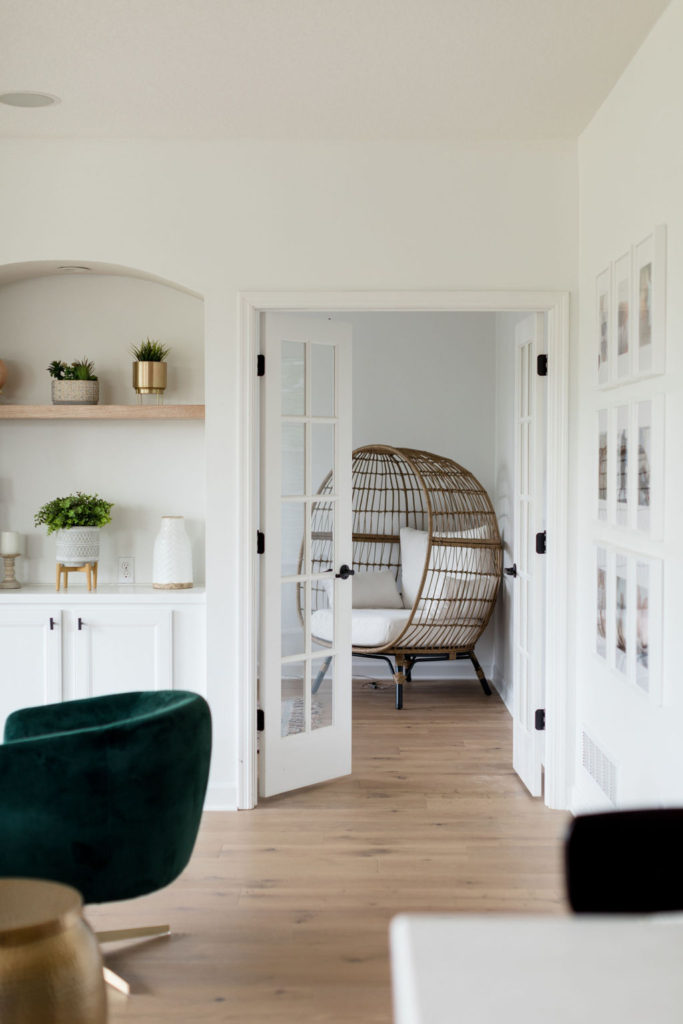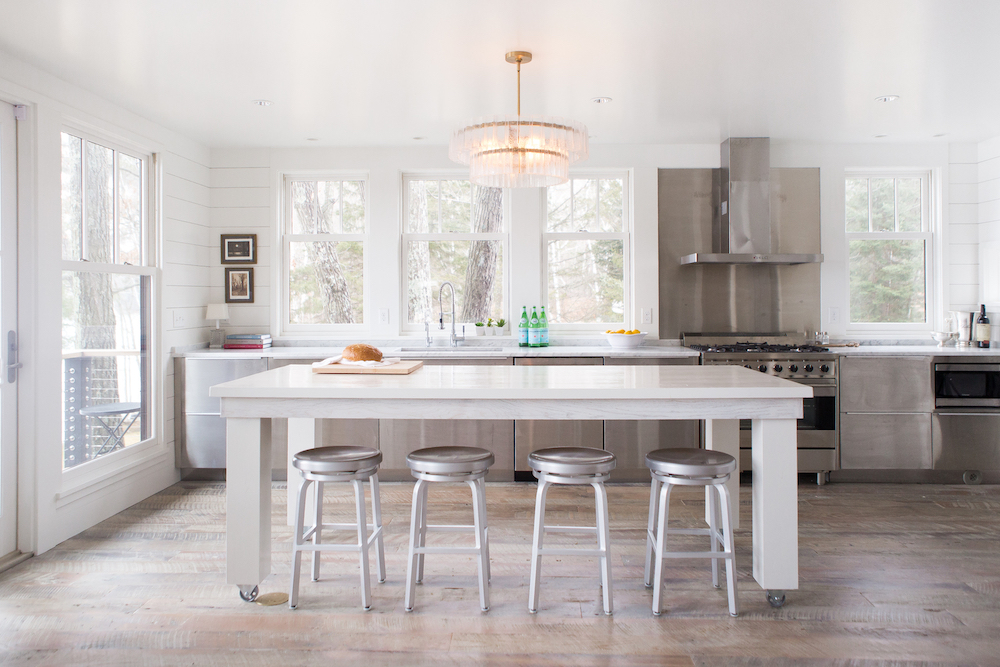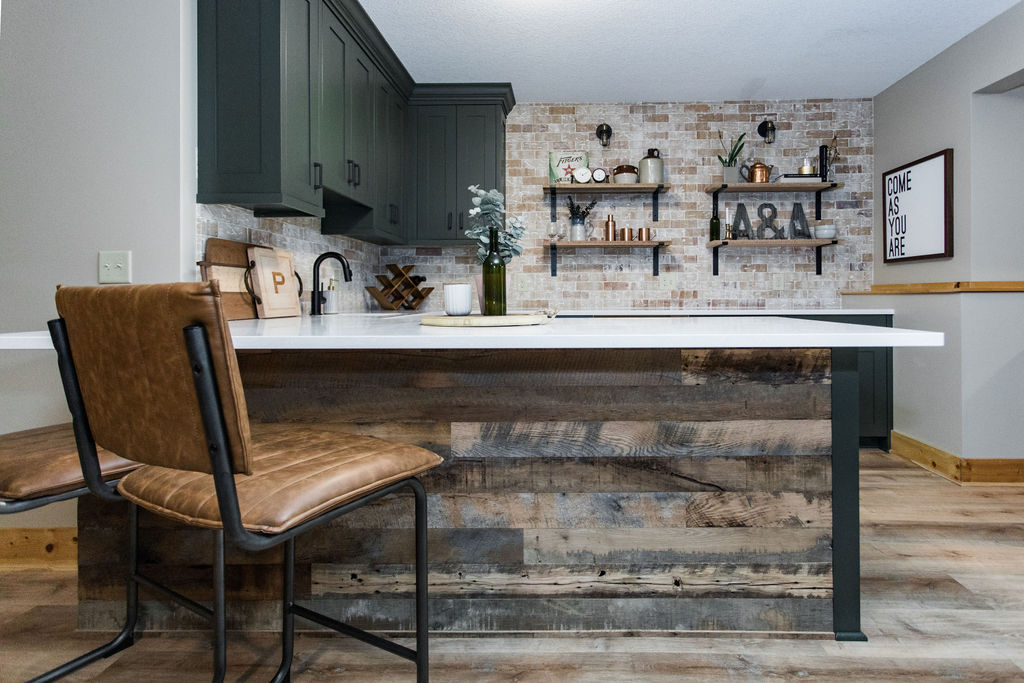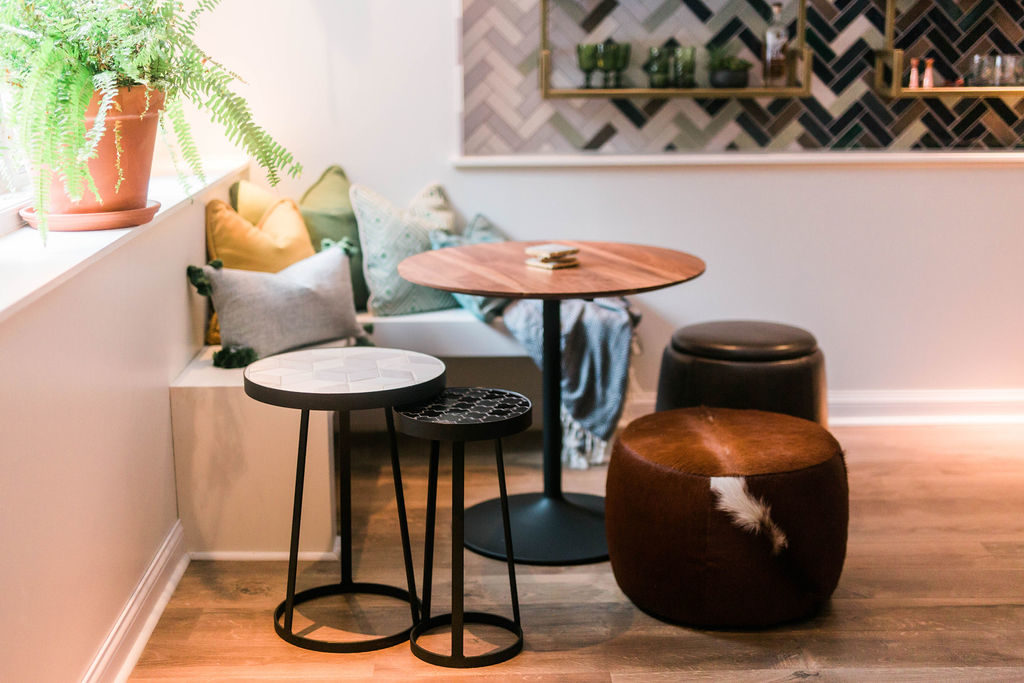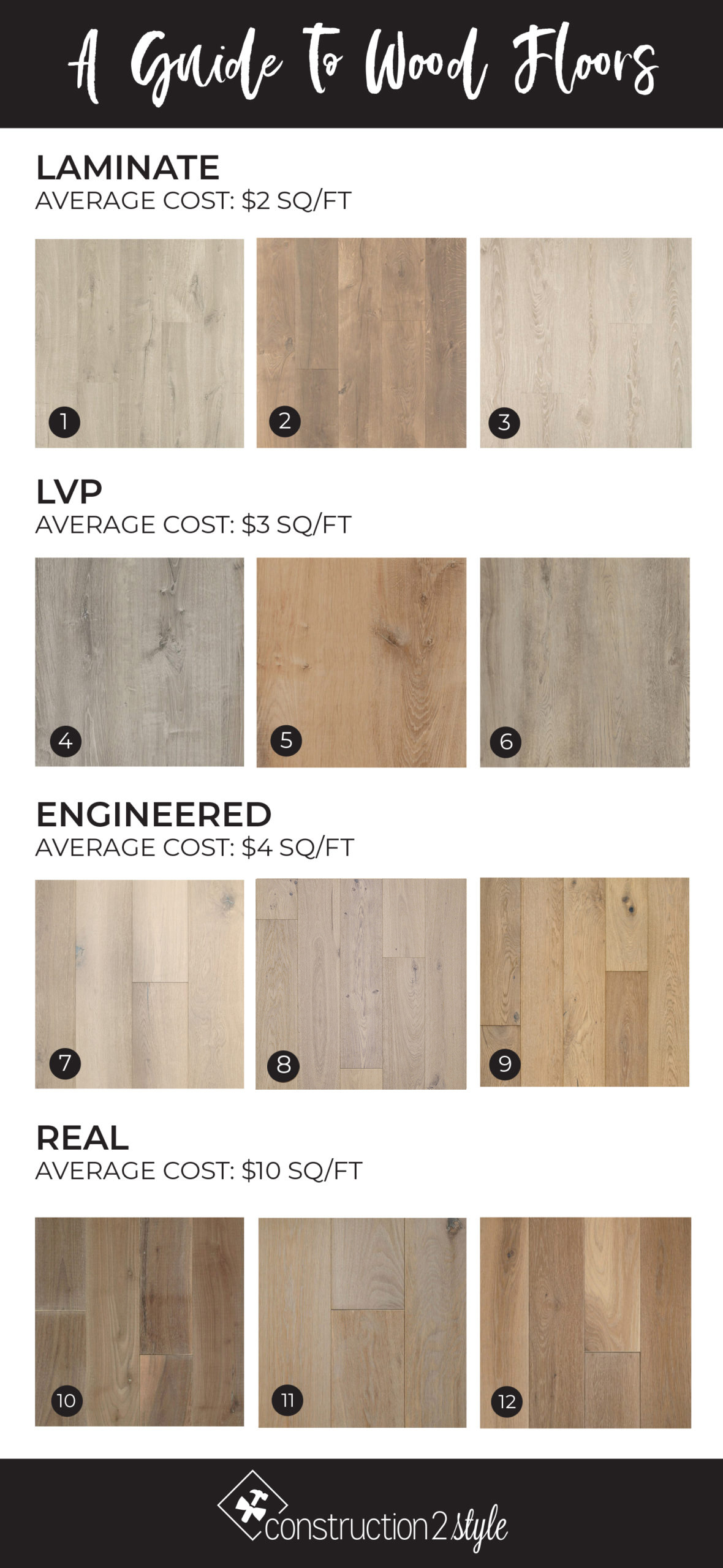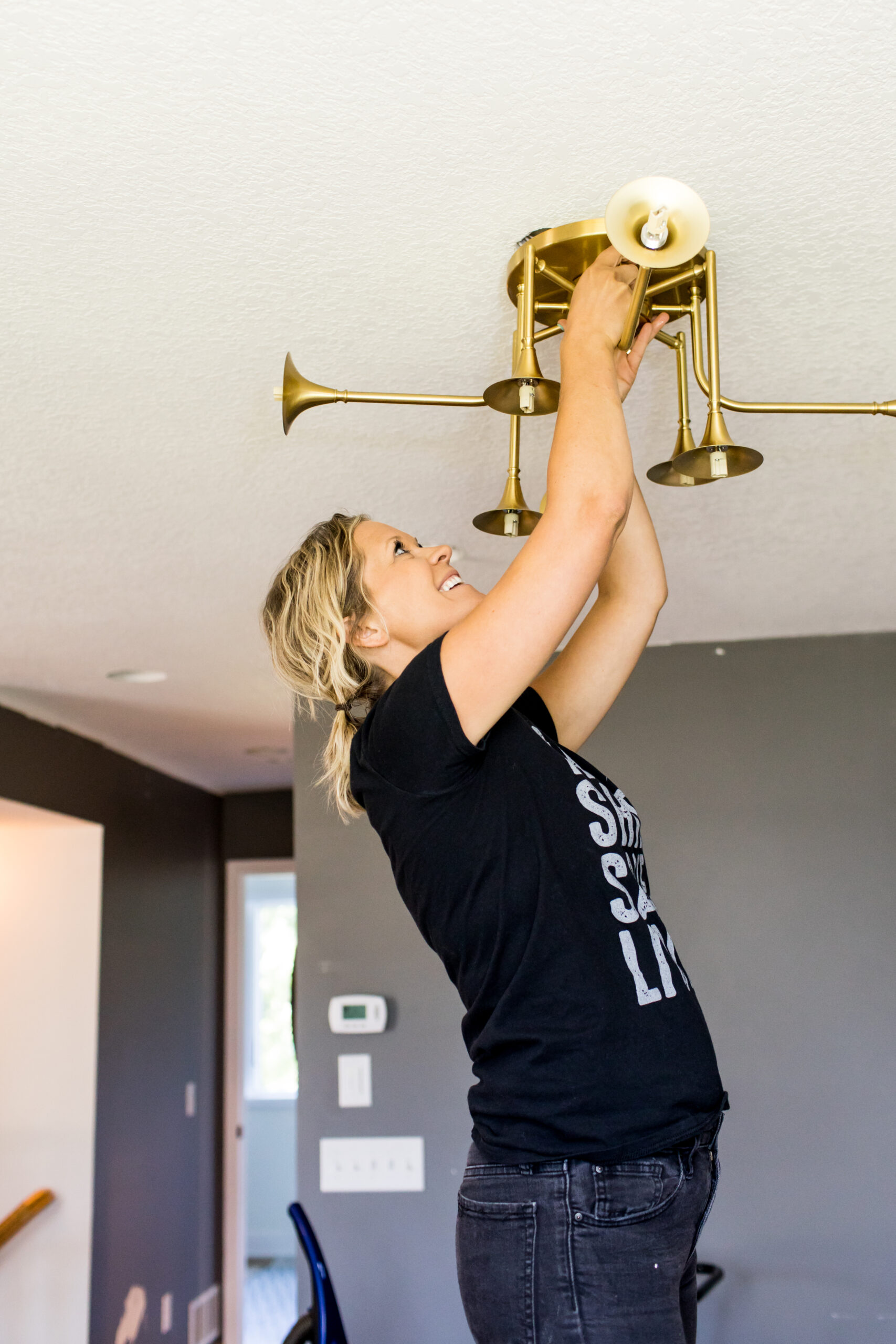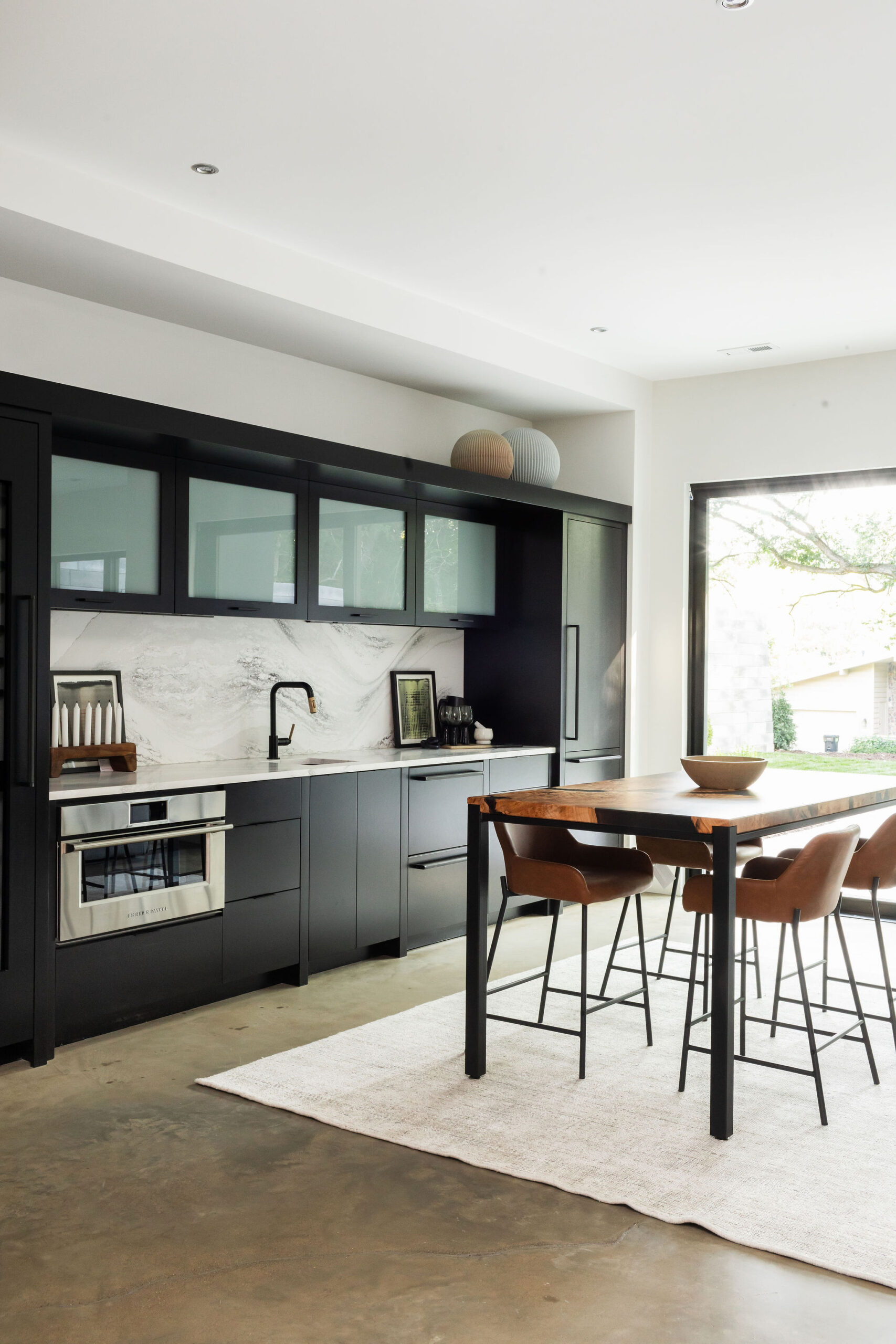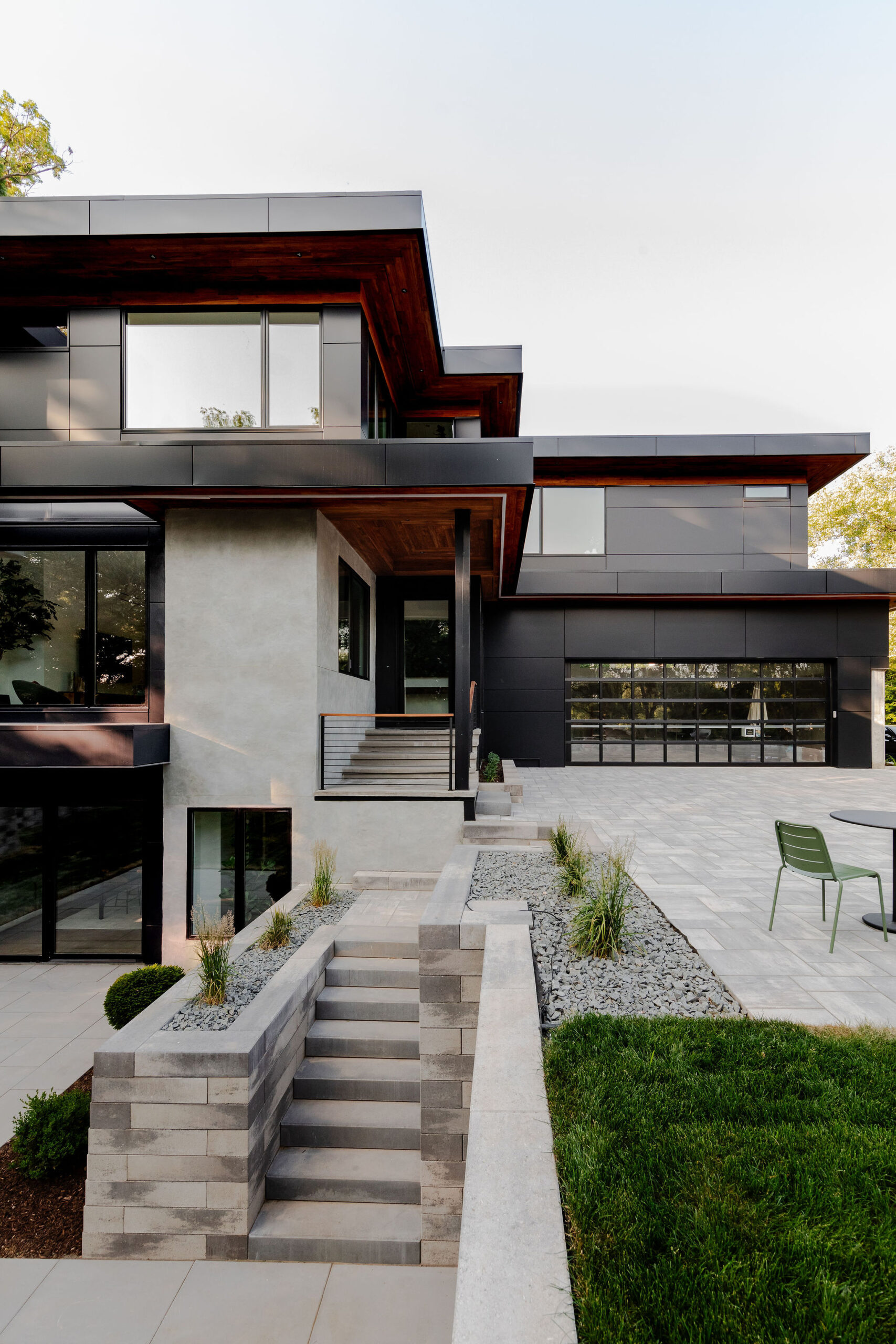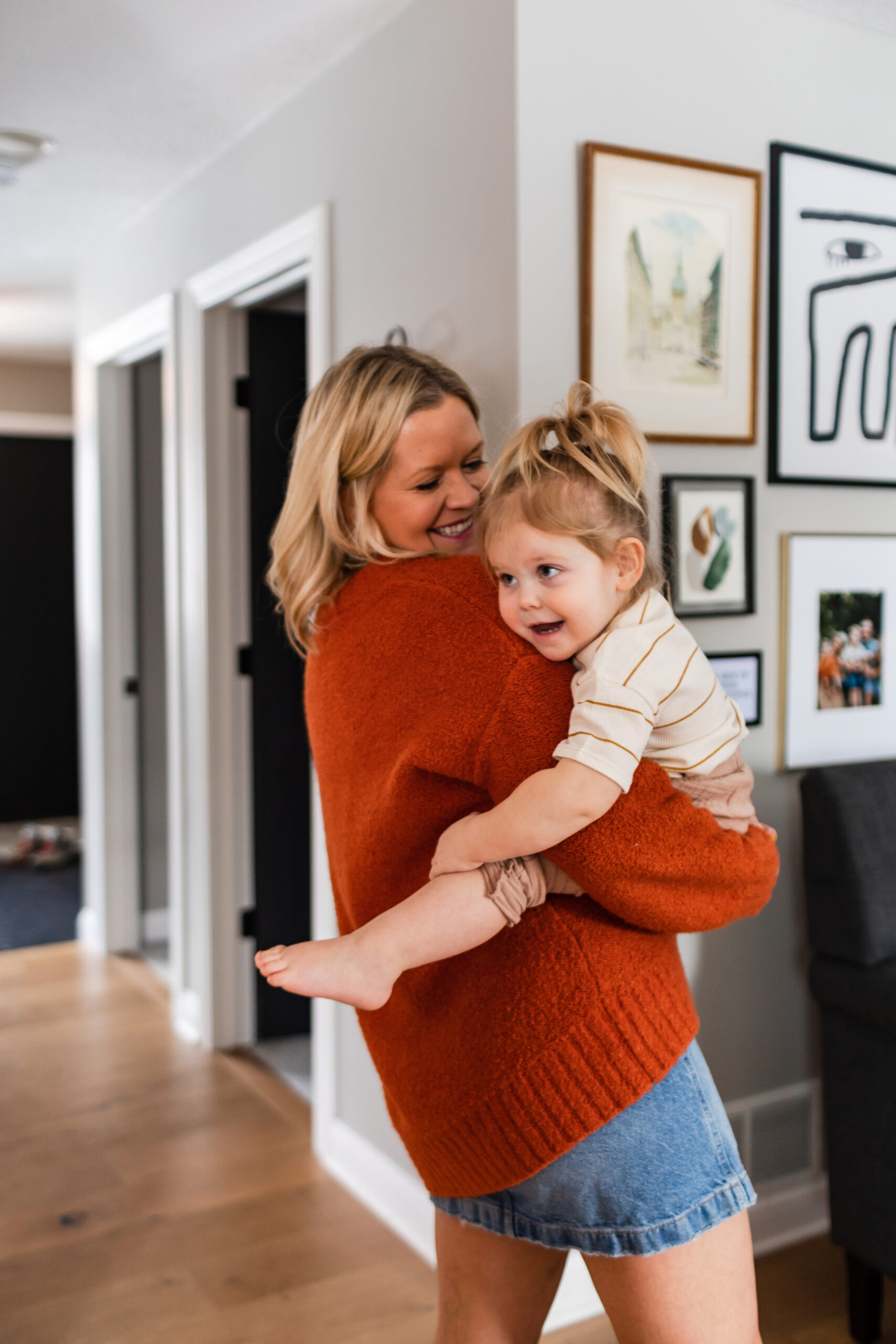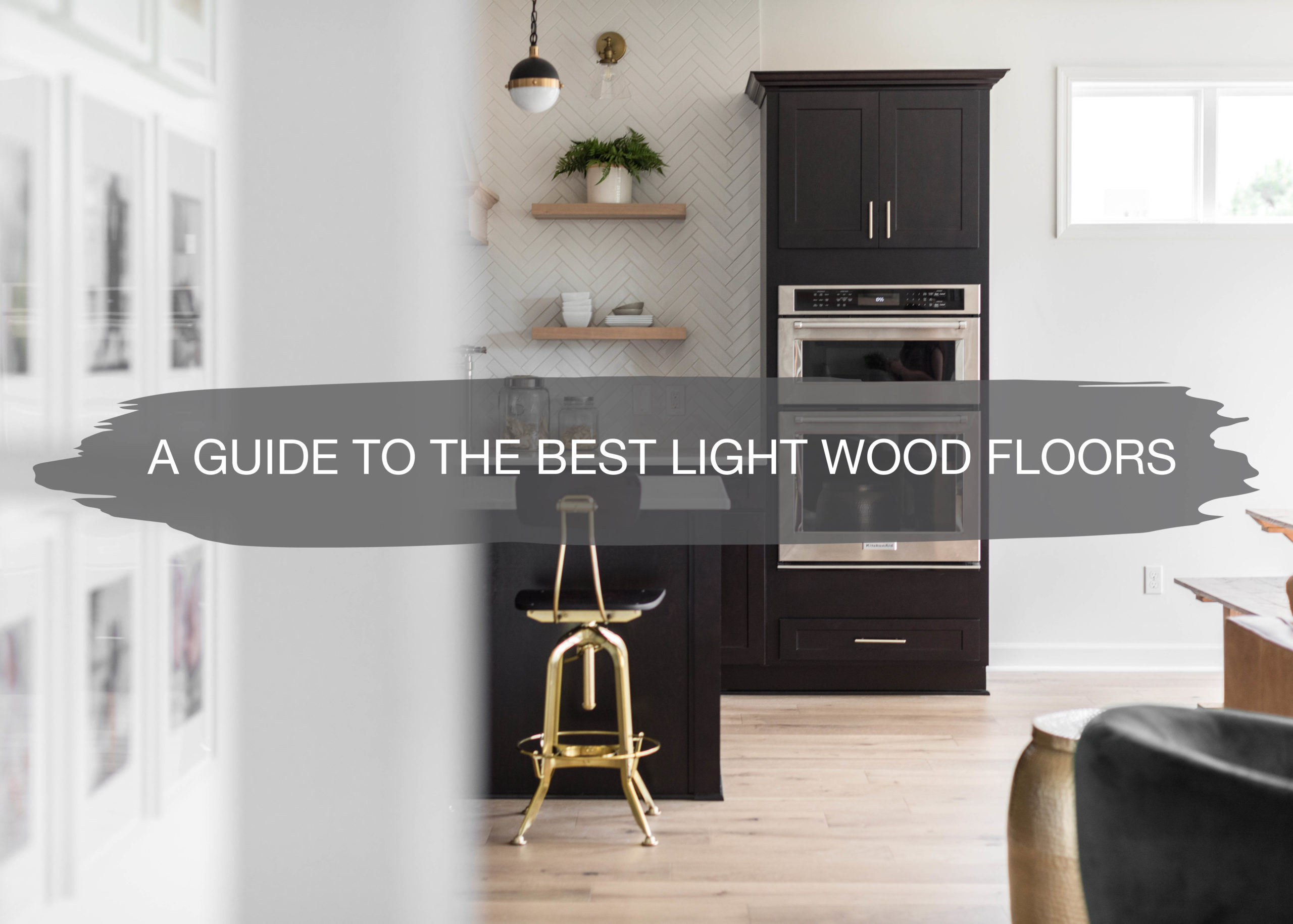
Light Wood Floors
Light wood flooring has hit the scene and doesn’t seem to be going anywhere anytime soon. When clients are wanting to update the flooring in their space, we always recommend a light to medium tone. We’ve found that darker flooring is beautiful, but it shows EVERYTHING! Especially when you have kids or pets, you’re going to want to go lighter for your flooring.
With that being said, there are a few different types of wood or wood-look flooring you can go with. When deciding on your flooring, there are many factors that go into what type you choose. Factors to consider include the cost, type of wood, having the ability to sand & refinish or not, if you want texture, and what you or your contractor are willing to install. So, today, we’re sharing the different types and our guide to the best light wood floors.
Real Hardwood
Real hardwood flooring is beautiful and adds a ton of character to any home. With a remodeling project where there is already hardwood flooring, it makes sense to tie into the existing flooring under walls that were taken out, in rooms that are becoming one, or refinish two different stains to become one. Real hardwood is more expensive than other options, but the quality is built to last and brings a natural element to the flooring in your home. We love WD Flooring’s High Plans Torrington for a lighter real wood option.
Average cost: $10 sq/ft
Pros
With real hardwood floors, you’re able to sand down and refinish them after wear & tear over the years or if you want to change the stain color. This also make it possible to repair them due to water damage or stains, since they can be sanded and refinished. Another benefit of real hardwood flooring is that you can choose your stain color or make your own custom combination.
Cons
Since real hardwood flooring needs to be matched to the wood species, it can sometimes be harder to match with older homes due to thinner plank sizes. In addition, the cost of refinishing and staining can add up, depending on the type of wood and work needed to be done. Because it is real wood, you’ll also see expanding and contracting during different seasons throughout the year, due to humidity and temperature. You also cannot install it below grade, like in a basement.
Engineered Hardwood
Engineered hardwood is one of our favorite types of flooring because of the price point, design options, and ease of installation. In Morgan & Jamie’s kitchen and main level, they installed Urban Floor’s Lambrusco, which is a beautiful light oak floor.
We also have a full tutorial on how to lay engineered hardwood flooring here.
We love Urban Floor because they have so many options for engineered flooring, from color to plank width. Engineered hardwood is made up of layers including a hardwood veneer on top and layers of wood below, but not necessarily the same species as the top layer.
Average cost: $4 sq/ft
Pros
A benefit of engineered hardwood is that it can be installed below grade, so it can be installed in a basement. There are many color options and it often is more stable than real hardwood. This means you’ll see less contraction and expansion and can get wider plank options as well. A lot of engineered hardwoods are made to be very durable and be long-lasting. It’s also less expensive than real hardwood and comes with options for stair nose, T-molding, quarter round, etc.
Cons
The disadvantage compared to real hardwood is that generally, it cannot be sanded down and refinished. Even though the top layer may be thicker, the sanding can cause the floor to move and not create a smooth surface. Engineered hardwood is not waterproof, so you need to be aware of humidity levels or where you are installing this type of flooring.
Reclaimed
Reclaimed hardwood floors are made out of wood milled from old barn wood or reclaimed wood. This brings character and history to your home. In addition, if you are looking for a greener alternative, this is a great option since it’s using wood that has already been milled. We love this reclaimed antique oak flooring from Manomin Resawn Timbers.
Average cost: $8 sq/ft
Pros
This type of flooring is unique to your home because of the character of the wood and you won’t find anything else like it. It’s also a greener option since it is recycled from various sources like old barns, rather than increasing demand for freshly-harvested wood from forests. It’s also durable and long-lasting.
Cons
If you’re looking for a perfect consistency, this is not the option for you. Since this wood is reclaimed, there is character to it. This also makes it harder to match to other wood in your home if you don’t choose reclaimed for other spaces.
LVP
Luxury vinyl plank, or LVP, flooring is another great option, that is cost effective. It’s made up of layers and the primary component is PVC vinyl, which makes this material stable, yet flexible. We love LifeProof’s Fresh Oak LVP.
Average cost: $3 sq/ft
Pros
This type of flooring is typically scratch resistant, making it durable for pets and kids. It also can be installed over existing concrete, tile, vinyl or wood. The cost is also great and now, most LVP flooring can be installed by interlocking planks. Some of them are waterproof as well. Since the planks are individual and interlocking, you can replace just that plank if it’s damaged.
Cons
Since this flooring is primarily made of plastic, it can have more of a plastic feel when compared to other flooring.
Laminate
Laminate flooring is easy to install and many options on the market are waterproof and scratch resistant. In Morgan & Jamie’s basement bar area, they went with a waterproof laminate from Pergo. They had some flooding in their basement and wanted a flooring option that had the look of wood, but would be able withstand water. The primary layer of laminate is made of high-density fiberboard, which gives it its rigidity and strength.
Average cost: $2 sq/ft
Pros
The benefit of laminate is that the cost is low, but still achieves the look of wood. Since a lot of laminates are now waterproof, it’s a great option for basements or areas with a lot of traffic. In addition, it’s easy to install as well, since it can be installed as a floating floor with interlocking planks. It also feels more like wood than LVP because it’s made of wood layers.
Cons
Because it is not a real wood or even engineered wood, it can look cheaper and lack the level of quality that real wood has. This flooring should not be glued or nailed down.
Shop Our Favorites
Laminate
1. Graceland Oak | 2. Wheaton Oak | 3. Sand Dune
LVP
4. Sterling Oak | 5. Fresh Oak | 6. Easy Oak
Engineered
7. Romagna | 8. Grigio| 9. Lambrusco
Real
10. Bergen | 11. Sand Point | 12. Torrington
